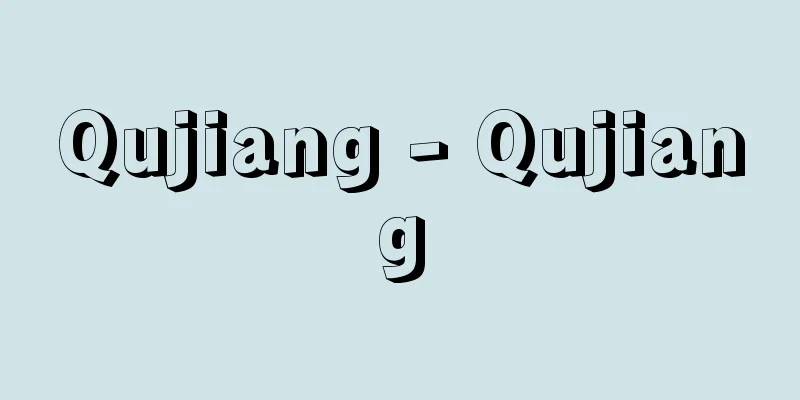Takeda Shingen

|
A feudal lord in the Sengoku period. He first ruled over Kai Province, and later over Shinano, Suruga, Kozuke, Hida, Mino, Totomi, and parts of Mikawa. His father was Nobutora, and his mother was the daughter of Oi Nobunari. His childhood names were Taro and Katsuchiyo, and he took the name Harunobu after coming of age. He was appointed to the official ranks of Daizendayu and Shinano no Kami, and in 1559 (Eiroku 2) he became a monk, taking the name Shingen, and was also known as Hosshoin and Tokueiken. In 1541 (Tenbun 10), Shingen banished his father, Shintora, who had been abandoned by his vassals for his tyrannical rule, to Imagawa Yoshimoto in Suruga, and became head of the family with the support of his vassals. Immediately after inheriting the family headship, he began invading Shinano, conquering the daimyo of Shinano, such as the Suwa clan, the Ogasawara clan, and the Murakami clan, and expanding his territory. This led to conflict with Nagao Kagetora (Uesugi Kenshin), who was moving south, and in 1553 the two clashed for the first time in northern Shinano. During this time, Shingen also focused on improving the systems within his territory, and in 1547 he enacted the "Kōshū Hatto no Shidai." The defeated Murakami and Ogasawara clans sought the help of Nagao Kagetora of Echigo, and Kenshin sent troops to Shinano and fought against Shingen for many years. This was the famous Battle of Kawanakajima, and there were five major battles between the two by 1564 (Eiroku 7). The battle in 1561 is particularly famous, and although the truth of the matter is unknown, there is a popular belief that a one-on-one duel between Shingen and Kenshin took place in the middle of the melee. Shingen maintained the upper hand in the battle against Kenshin, and then, leveraging the alliance of three men through marriage with neighboring Hojo Ujiyasu and Imagawa Yoshimoto, invaded Western Kozuke and aimed to take possession of northern Kanto. Here, he faced off against Kenshin again, and Shingen cooperated with the Odawara Hojo clan to stop Kenshin from moving south. At the same time, Shingen also invaded Hida and Mino, eliminating old clans such as the Kanazashi and Toyama clans and making them his territory. In 1567, Shingen executed his eldest son Yoshinobu for treason, and returned his wife (Imagawa Yoshimoto's daughter) to Imagawa Ujizane, thus severing his alliance with the Imagawa clan. At the end of the following year, Shingen raised an army to invade Suruga, and in April 1569, he expelled Ujizane and took possession of Suruga. At the same time, Tokugawa Ieyasu invaded Totomi, and the Imagawa clan was destroyed. This incident became the turning point for Shingen to become hostile towards the Hojo clan, with whom he had been allied until then, and Shingen fought repeated fierce battles with the Hojo clan in Sunto District, Izu, and other places. In October 1569, Shingen besieged Odawara Castle, the home base of the Hojo clan, and then won the Battle of Mimasu Pass in Sagami Province, confronted Hojo Ujiyasu at Okitsu, and invaded Izu. However, in 1571 (Genki 2), he made peace with the Hojo clan according to the will of Hojo Ujiyasu. In the course of his battle with the Hojo clan, Shingen also formed alliances with the daimyo of the Kanto region, drawing close ties with the Satake clan of Hitachi and the Satomi clan of Awa. After making peace with the Hojo clan, Shingen's goal was clearly to march westward to Kyoto, and in 1572, he sent troops to Totomi and Mikawa one after another, beginning a confrontation with Tokugawa Ieyasu and Oda Nobunaga, who was behind him. In October of that year, Shingen himself left Kofu with a large army and began his march westward. In December, he approached Hamamatsu, Ieyasu's castle, and defeated the combined forces of Ieyasu and Nobunaga at Mikatagahara. He then advanced into Mikawa, taking down the Tokugawa castles one after another. However, in April of the following year, 1573, he fell ill while besieging Mikawa Noda Castle (Toyoshima Castle, Shinshiro City, Aichi Prefecture) and died of an illness on April 12th at the age of 53 at Komaba in the Ina Valley of Shinano (Komaba, Achi Village, Shimoina County, Nagano Prefecture) on his way back to Kofu. As per Shingen's will, his son Katsuyori concealed his death for three years. In April 1576 (Tensho 4), his funeral was held and Erinji Temple (Koshu City, Yamanashi Prefecture) was designated as his grave. He was given the posthumous name Erinjidono Kizan Genko Daikoji. Later, Katsuyori divided some of his bones and sent them to Mount Koya, where he donated a portrait of Shingen and other belongings. Shingen's successor was his fourth son, Katsuyori. Shingen's policies were notable for the early development of transportation routes within his domain, establishing the teleman system, and putting effort into forest and flood control, constructing the Shingen Levee. He also stationed former castle lords and senior vassals in occupied territories to form subsidiary castle territories, and furthermore, he carried out land surveys and implemented the Hito Tsugei Law to control the peasants within his domain, and gathered merchants and craftsmen in Kofu to build a castle town. There is a portrait of Shingen currently preserved at Seikeiin Temple in Mount Koya, and in his later years he is depicted with the body of a monk and a portly figure. He also had a talent for waka poetry and prose, and as a Sengoku daimyo he is thought to have been a brilliant general skilled in both the arts and the military. [Shunroku Shibatsuji] "The Life of Takeda Shingen" by Hirose Hirokazu (1944, Kamisuzurisha)" ▽ "Takeda Shingen" by Okuno Takahiro (1959, Yoshikawa Kobunkan)" ▽ "Takeda Shingen" by Isogai Masayoshi (1970, Shinjinbutsu Oraisha) " ▽ "Study of the Domain of the Warring States Lords" by Shibatsuji Shunroku (1981, Meishu Publishing) [References] | |"Portrait of Takeda (Shingen) Harunobu" Partial copy owned by the Historiographical Institute, University of Tokyo © Historiographical Institute, University of Tokyo "> Takeda Shingen Takeda Harunobu's signature ©Shogakukan "> Takeda Shingen's signature Source: Shogakukan Encyclopedia Nipponica About Encyclopedia Nipponica Information | Legend |
|
戦国大名。初め甲斐(かい)国、のちには信濃(しなの)・駿河(するが)と、上野(こうずけ)・飛騨(ひだ)・美濃(みの)・遠江(とおとうみ)・三河の一部を領有する大大名となる。父は信虎(のぶとら)。母は大井信達(のぶなり)の娘。幼名を太郎、勝千代といい、元服して晴信(はるのぶ)と称した。官位は大膳大夫(だいぜんだゆう)、信濃守(しなののかみ)に任ぜられ、1559年(永禄2)に出家して信玄と号し、法性院(ほうしょういん)、徳栄軒(とくえいけん)とも称した。 1541年(天文10)に、暴政を振るって家臣団から見放された父信虎を駿河の今川義元(よしもと)のところへ追放し、家臣の支持を得て当主となった。家督相続の直後から信濃への侵入を開始し、諏訪(すわ)氏、小笠原(おがさわら)氏、村上氏などの信濃の諸大名を制圧し、領国の拡大を図った。そのため南下策をとっていた長尾景虎(ながおかげとら)(上杉謙信(けんしん))と対立することになり、1553年に両者は初めて北信濃で衝突する。その間信玄は領国内の制度の整備にも力を入れ、1547年には「甲州法度之次第(こうしゅうはっとのしだい)」を制定している。敗走した村上・小笠原氏らは越後(えちご)の長尾景虎に助力を求め、謙信は以後連年にわたって信濃へ出兵し信玄と対決した。これが著名な川中島(かわなかじま)の戦いで、1564年(永禄7)までのおもな対戦だけでも五度に及んだ。とりわけ1561年の対戦は有名で、真偽は不詳であるが、乱戦のなかで信玄と謙信との一騎討ちが行われたという俗説が残されている。謙信との対決でも優位を保った信玄は、その後、隣国の北条氏康(うじやす)、今川義元との婚姻による三者の同盟関係を梃子(てこ)に、西上野(こうずけ)に侵入し、北関東の領有をねらった。ここでも謙信と対決することになり、信玄は小田原北条氏と連携して謙信の南下を阻止した。同時にこのころから飛騨・美濃へも侵入し、金刺(かなざし)・遠山氏などの旧族を滅ぼして領国化した。1567年に長男義信(よしのぶ)を反逆罪で刑死させると、その妻(今川義元の娘)を今川氏真(うじざね)のもとへ返し、今川氏との同盟関係を絶った。信玄は翌年の暮に駿河侵攻の兵をおこし、1569年4月には氏真を追放して駿河を領有した。同時に遠江へは徳川家康が侵入し、今川氏は滅亡する。この事件を契機として、それまで同盟関係にあった北条氏と敵対することになり、信玄は北条氏と駿東(すんとう)郡・伊豆などで激しい戦いを繰り返した。1569年10月には、北条氏の本拠地である小田原城を包囲し、ついで相州(そうしゅう)三増(みませ)峠の戦いでも勝利を収めて、北条氏政と興津(おきつ)に対陣、伊豆に進攻した。しかし1571年(元亀2)には北条氏康の遺言によって和議を結んだ。信玄は北条氏との対決の過程で、関東の諸大名とも同盟関係を結び、常陸(ひたち)の佐竹(さたけ)氏、安房(あわ)の里見(さとみ)氏らに接近している。 北条氏との和議の成立後は、信玄の目標ははっきりと上洛(じょうらく)のための西上(さいじょう)作戦に向けられ、1572年に入ると、遠江・三河への出兵が相次ぎ、徳川家康とその背後にいた織田信長との対決が始まった。同年10月には、信玄自ら大軍をもって甲府を出発し、西上作戦を開始した。12月には家康の居城である浜松に近づき、三方(みかた)ヶ原で家康・信長の連合軍を打ち破った。その後進んで三河へ侵入し、徳川方の諸城を相次いで攻め落とした。しかし、翌1573年4月、三河野田城(愛知県新城(しんしろ)市豊島(とよしま)本城)を包囲中の陣中で病床に伏し、いったん甲府へ帰陣する途中の信濃伊那谷(いなだに)の駒場(こまんば)(長野県下伊那郡阿智(あち)村駒場(こまば))で4月12日、53歳をもって病死した。信玄の死は信玄の遺言どおりその子勝頼(かつより)によって3年間隠された。1576年(天正4)4月に本葬が営まれ、恵林寺(えりんじ)(山梨県甲州市)が墓所と定められた。法名は恵林寺殿機山玄公大居士。その後、勝頼によって高野山(こうやさん)へも分骨が行われ、その際、信玄の画像や遺品などが奉納されている。信玄の跡目は四男の勝頼が継ぐことになった。 信玄の政策として特徴的なことは、早くから領国内の交通路を整備し伝馬制度を確立させたことや、治山・治水に力を入れて信玄堤(づつみ)などを築いたことである。また占領地に旧城主や重臣を配置して支城領を形成していったこと、さらには、領国内の農民支配のための検地の実施や人返し法、商人・職人などを甲府へ集めて城下町を建設したことなどがあげられる。現在、高野山成慶院(せいけいいん)に残っている信玄の画像があるが、晩年の信玄は僧体で、恰幅(かっぷく)豊かな姿に描かれている。和歌や詩文の才もあり、戦国大名としては、文武両道を備えた名将であったと思われる。 [柴辻俊六] 『広瀬広一著『武田信玄伝』(1944・紙硯社)』▽『奥野高広著『武田信玄』(1959・吉川弘文館)』▽『磯貝正義著『武田信玄』(1970・新人物往来社)』▽『柴辻俊六著『戦国大名領の研究』(1981・名著出版)』 [参照項目] | |「武田(信玄)晴信画像」 東京大学史料編纂所所蔵模写(部分)©東京大学史料編纂所"> 武田信玄 武田晴信当時の花押©Shogakukan"> 武田信玄花押 出典 小学館 日本大百科全書(ニッポニカ)日本大百科全書(ニッポニカ)について 情報 | 凡例 |
Recommend
Le Prince, JB (English spelling) LePrinceJB
...Pine resin powder is sprinkled on a copper pla...
Workplace Theatre
This refers to independent circle theatrical activ...
Jeongjo - Jeongso
The 22nd king of the Joseon Dynasty. Reigned from ...
Nebuta
Tanabata is a festival held in Hirosaki, Aomori a...
John Wiley & Sons, Inc.
…Printed and bound by a bookstore [Minowa Shigeo]...
Tennoume - Tennoume
An evergreen shrub of the Rosaceae family that gro...
Corydalis heterocarpa (English name) Corydalisheterocarpa
… [Morita Tatsuyoshi]. … *Some of the terminology...
Dry farming - Kansou no Ugyo
...This refers to a farming method that does not ...
Tourismus
…The word tourism began to be used in the UK at t...
Okosozukin - Okosozukin
A type of hood for women. During the Kyoho era (1...
Leperditiida
… [Masamichi Takeda] [Fossils and lineages] The o...
Graph Theory - Grafriron
The graphs in graph theory are not those that vis...
Haibara [town] - Haibara
An old town in Uda County, occupying the mountaino...
imago
… [Semantics] It comes from the Latin imago, whic...
Fox tuna - Fox tuna
→ Bonito Source: Shogakukan Encyclopedia Nipponic...









